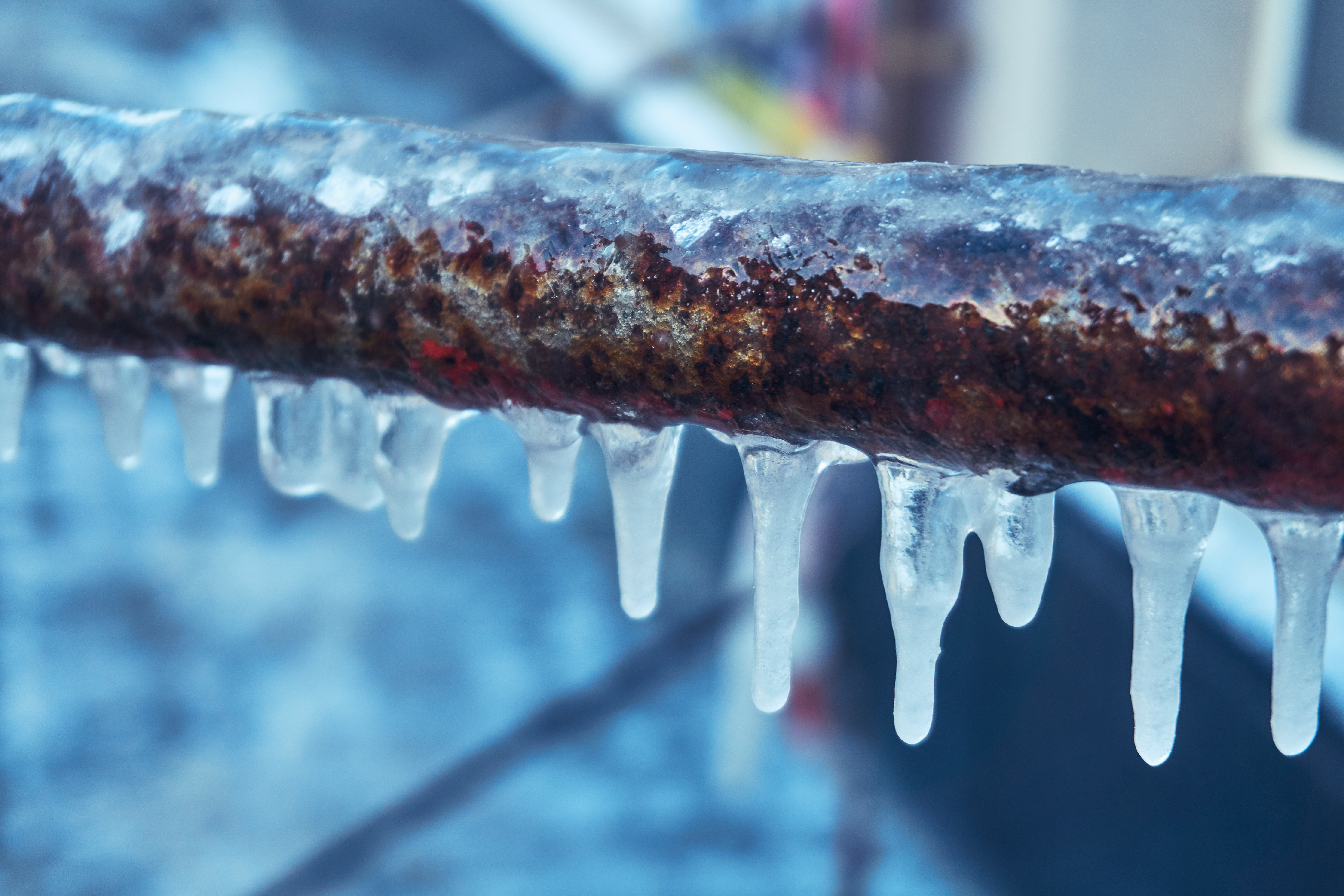
We often hear about the devastation that occurs when pipes burst in the wintertime. However, it can be avoided. If caught early enough, homeowners can take restorative steps to fix their piping. Here’s what to do when your pipes freeze.
Identify Frozen Pipes
Frozen pipes present severe home hazards, which can lead to water and mold damage to your home if the pipes burst. Save yourself the headache by knowing how to identify frozen pipes and what to do when your pipes freeze.
Note the Symptoms
Chances are pretty good that if your home’s pipes don’t look or behave appropriately during the colder months, frost has become an issue.
- Low Water Flow – What’s the water flow like in your home? Strong, steady streams of water through faucets indicate healthy pipes. However, if the faucet handles are turned to full blast with nothing but a trickle at most, the pipes have likely frozen.
- Toilets Won’t Refill – It’s one thing for the toilet not to refill if the water is turned off. However, if you finish a bathroom break and the bowl won’t refill after a flush, there’s more to the story.
Trace to Specific Areas
Pipe systems run throughout your home, so how do you figure out where the problem is? The process of elimination and appearance help to narrow down the possibilities.
- Turn on Each Faucet – Move steadily throughout the house and turn on the various faucets–from the kitchen and bathroom to the laundry tub and outdoor spicket. During the process, pay attention to the water flow at each point. Remember, low flow is a sign of trouble.
- Note Any Ice or Malformed Piping – When inspecting exposed pipes, Look carefully at their condition. If a problem exists, common visible signs include frost on the exterior of the pipes and/or slight bulging (like a snake after a recent meal).
How to Unfreeze Pipes
It’s actually pretty simple to unfreeze pipes in your home if you take the necessary precautions along the way. The process may differ slightly depending on whether the affected pipes are exposed or enclosed inside a wall.
Precautions to Take
- Shut Off the Water Supply – There’s no telling what your pipes could do once they start to thaw, so the safest course of action is to shut off the water main. Frozen water may well be trapped inside the piping, which upon thawing, could rush through and make a mess.
- Open Each Faucet – Give that soon-to-be-released water some room to move. Open each affected faucet completely when beginning the thawing process, including both the hot and cold handles. Doing so will ease built-up pressure and get that previously-frozen water moving through the pipes. Be prepared for a bit of steam to also escape once thawing starts.
Thawing Process
Exposed pipes you can directly apply heat to are generally easier to thaw, while enclosed pipes might present additional challenges.
- Exposed Pipes – Consider positioning a heat lamp or space heater near the affected pipe(s) for indirect heat. Alternatively, use tested methods like holding a hairdryer over the frozen pipe (beginning near the faucet) and applying electrical heating tape to the pipe itself.
- Enclosed Pipes – If possible, cut into the drywall to access the pipe and try the exposed pipe thawing methods. If this isn’t ideal, an infrared lamp could penetrate the wall in front of a frozen pipe, or turning up the heat in your home might kickstart the thawing process.
Call Terry’s to Fix the Freeze
Too late to fix the cause of the problem? At least now you know what to do when your pipes freeze. In the meantime, if the pipes have already burst, Terry’s Plumbing can help. Give us a call to learn how we can get your home back to maximum efficiency.
 (412) 364-9114
(412) 364-9114
